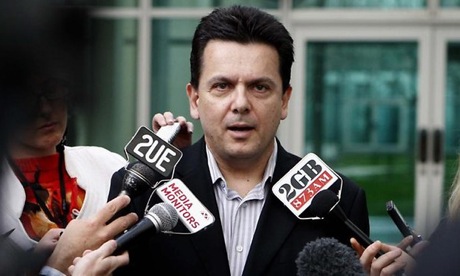As the controversy over the sexual abuse of children continues in Australia, politicians and editorial writers are calling for Catholic priests to be forced to break the seal of confession in sex-abuse cases.
Independent Senator Nick Xenophon labeled the seal of confession an anachronism and told reporters: “This is a medieval law that needs to change in the 21st century. Church law, canon law, should not be above the law of the land.”
Prime Minister Julia Gillard, when asked whether the royal commission she has announced should examine confession, said: “It’s not good enough for people to engage in sin of omission and not act when a child is at risk.”
Federal Attorney-General Nicola Roxon, who is charged with setting up the commission, said the community found the idea of a priest not reporting child abuse if told about it in a confession to be “really abhorrent”, but she cautioned against too much focus on the issue.
Ms Roxon said there were ”much more blatant and open failures” to stop abuse that needed to be examined and not just in the Church, but other institutions as well. These included turning a blind eye to abuse, not acting on complaints by victims and not acting on ”open secrets” that a certain individuals within organisations were child abusers.
Even retired Bishop Geoffrey Robinson of Sydney, a former president of the Canon Law Society of Australia and New Zealand, said he would break the seal of confession for the “greatest good” of reporting an abuser.
On the other hand, Cardinal George Pell of Sydney declared that the seal of confession is “inviolable”.
“The law of the land is also clear,” he said. “Federal and state laws protect a member of the clergy from being forced to divulge details of a religious confession, just as it protects clients from being forced to disclose what they discuss with their lawyers.
“Religious freedom is protected by the Australian constitution; an essential part of the separation of church and state, which protects believers and faith communities from government dictating religious belief and practice.”
Sources:
Image: The Australian
